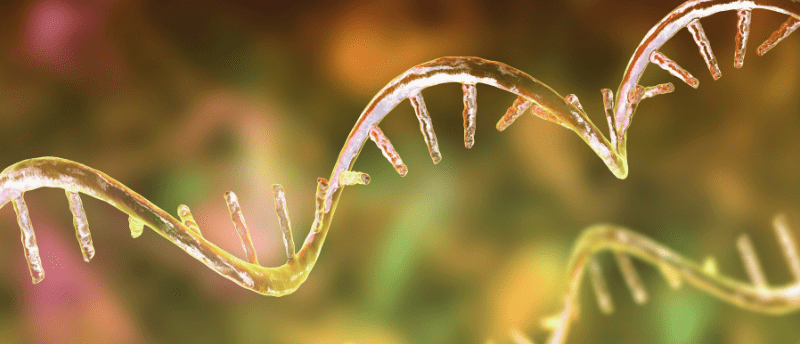Webinar Q&A follow up: Integrated bioanalytical strategy for LNP-mRNA products

Thank you to everyone who attended our webinar, ‘Integrated bioanalytical strategy for LNP-mRNA products‘, in association with WuXi AppTech (Shanghai, China). Below are responses from our speaker, Nan Jia, to the questions posed by our audience during the live event. We hope this is a useful resource and thank those who submitted these thoughtful questions.
 Nan Jia
Nan Jia
Assistant Director
WuXi AppTec
Dr Jia currently serves as the Assistant Director of the Immunology Lab in the Bioanalysis Department of WuXi AppTec, focusing on leveraging bioanalytical technologies to aid drug research and development. Jia received a PhD degree in Biochemistry from Imperial College London (UK). Before joining WuXi AppTec, he worked as a Post-Doctoral Researcher at Beth Israel Deaconess Medical Center (Harvard Medical School; MA, USA), with his primary research focus on the bioanalysis of carbohydrates. Jia has authored 11 peer-reviewed publications.
Webinar Q&A follow up
Do you follow the biodistribution of lipids after LNP dislocation?
Pharmacokinetic (PK) analysis is typically not required for clinical bioanalysis, but biodistribution must be investigated for novel excipients in the non-clinical stage. This can be done in different ways, for example, the biodistribution of LNP components for the mRNA vaccine COMIRNATY® was evaluated in rats.
What assays in the LNP-mRNA bioanalytical workflows utilize LC–MS?
LC–MS is used to analyze the biodistribution of LNP components.
Can you comment on the need for quantification of the expressed protein(s) encoded by the mRNA for vaccines and therapeutics?
At the moment, there is no clear regulatory guidance on this topic. For mRNA vaccines, humoral and cellular immunogenicity are the key indicators for the efficacy assessment. Quantification of expressed proteins is not required for clinical bioanalysis but can be considered part of a pharmacodynamic study in the non-clinical phase. This is exemplified by the transcribed protein expression for COMIRNATY™.
Quantitating the expressed protein is recommended for therapeutic products, as it is relevant to the drug’s pharmacology characteristics.
Are there different bioanalysis expectations for mRNA therapeutics for a wider population compared to personalized mRNA therapeutics (e.g., mRNA cancer vaccines)?
In the context of this question, I am assuming the ‘mRNA therapeutics’ here refers to therapeutic mRNA vaccines. Based on their mechanism of action, cancer vaccines can be categorized into preventative and therapeutic vaccines. Preventative vaccines prevent the infection or spreading of oncogenic pathogens, such as HBV and HPV, and are vaccinated to a wider population. This type of vaccine follows the bioanalytical strategy I presented in the webinar.
Personalized cancer vaccines, on the other hand, are designed as therapeutic vaccines by killing existing tumor cells. The mechanism of action could be very different, as the cancer vaccine may not necessarily be designed to neutralize surface proteins of the pathogen. In this case, the measurement of neutralizing antibody production using a pseudovirus assay is inappropriate. Another major difference is the assessment of vaccine efficacy. As a critical endpoint for a Phase III clinical trial, vaccine efficacy is calculated to reflect the protection power of a vaccine in a wider population, so qualitative assays are needed. For personalized cancer vaccines, the term efficacy is no longer applicable, and pathogen load is more relevant in this scenario. Quantitative assays could be more useful in monitoring the effectiveness of vaccine therapy.
Can you comment on the pros and cons of the two PK-mRNA assays, bDNA assays and RT-qPCR in terms of sensitivity, ease of operation and cost?
After years of development, the sensitivity of bDNA technology is certainly catching up with the conventional RT-qPCR method. For PK evaluation, the sensitivity of the bDNA assay could well be adequate to follow the biodistribution of mRNA vaccines. However, for clinical diagnosis, RT-qPCR remains the gold standard assay. For operation, extensive sample preparation and cleanup is essential for PCR-based assays but is minimally required for bDNA assays. Assay procedures for a bDNA assay are similar to those for an ELISA assay, so they are easy to follow.
Sets of different probes need to be designed for the bDNA assay, but some commercial vendors provide probe design and manufacturing services. It is difficult to compare the overall cost between the two analytical technologies, as it depends on a few factors, including the type of instrument for data acquisition, requirement for high throughput, degree of method optimization and level of dependency on commercial services.
Are there any LC–MS-based mRNA applications using RNase digestion? If so, how comparable is it with molecular assays?
There are certainly methods established in recent years for analyzing digested mRNA via the LC–MS platform. It is difficult to compare the LC–MS methods with molecular assays directly, but here are a few factors to consider.
The level of sensitivity, as PCR-based assays are more sensitive than MS-based methods. The reproducibility of RNAse digestion to produce desirable length of RNA fragment for LC separation and MS ionization. The level and type of chemical modification of mRNA affect the chemical-physical characteristics of the modality and thereby influence separation and ionization. Generally speaking, much effort is needed for method optimization for the LC-based methods.
On the other hand, molecular assays are easy to design and perform but require extensive sample extraction and purification. The quality of the extracted mRNA sample directly affects downstream experiments, including RT-PCR amplification. Extraction and PCR reagents/kits should be carefully selected and tested to avoid misleading PCR results.
Is immunogenicity assessment of lipids necessary?
As small molecules are generally non-immunogenic, it is not always required to assess the immunogenicity of helper lipids, cholesterol and cationic lipids, which are the major components of LNP. However, PEGylated lipids are polymeric and have been used as conjugates for antibody drugs. For mRNA vaccines, effectiveness is measured by the generation of humoral and cellular immune responses, so the immunogenicity of lipids is irrelevant here. However, for mRNA therapeutic drugs, the immunogenicity of PEG should be tested as it is now an undesirable immune response, which can lead to safety consequences.
How do you assess immunogenicity for mRNA vaccines?
Immunogenicity assessment for mRNA vaccines can be divided into humoral and cellular immunogenicity. Binding antibodies and neutralizing antibodies are quantified to evaluate the levels of humoral immune responses. For cellular immunity, this can be done in various ways, including ELISpot quantification of cytokine production, measurement of B/T cell proliferation and intracellular cytokine production, and detection of cell surface marker expression. Study design for the assessment of immunogenicity relies on the mechanism of action for a specific mRNA vaccine.
Is it necessary to perform PK analysis for LNP-mRNA products?
If it is an LNP-mRNA therapeutic product, then yes, PK analysis should be done in both the non-clinical and clinical phases. However, PK analysis is only required for LNP-mRNA vaccines in the non-clinical stage.
What regulatory considerations should be taken into account when developing LNP-mRNA products?
At the moment, there is no specific regulatory instruction for LNP-mRNA as a whole, although regulations for specific mRNA products do exist. LNP-mRNA vaccines should follow vaccine regulations, whereas various regulations related to gene therapy products should be considered for LNP-mRNA therapeutic products.
How does the LNP component influence the bioanalytical process for mRNA drugs?
The whole bioanalytical strategy for mRNA drugs does not change with different LNP variations, other than tailored optimization of LC–MS conditions that are required for different LNP compositions.
This feature was produced in association with:


